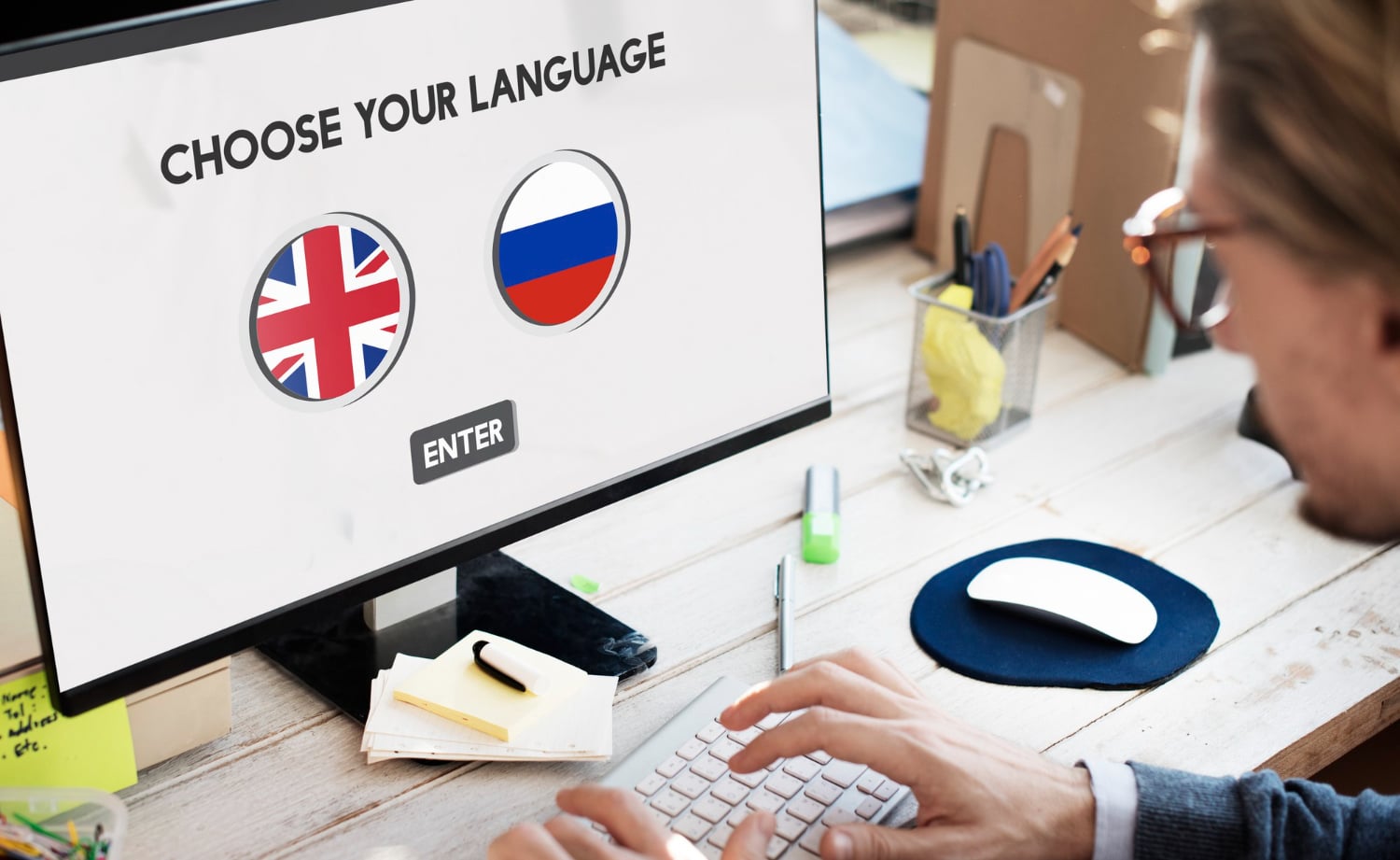
Website Translation: 4 Keys for a Professional Translation of your Website

Have you already started a business and need to make it grow? To achieve this, one of the first steps is to look for new business and commercial activity in international markets. It is useless to have the best product if it is only accessible to those who speak your language.
How long would you browse a website written in a language you don’t know? Therefore, when we talk about expanding your business or idea to international markets, we also have to talk about the translation and localisation of your website. This will make it the headquarters of your business worldwide.
- Reach International Markets with Local Language
- Web Translation with SEO
- Aim of Web Translation: Attracting New Customers
- Technical Aspects Also Matter in Web Translation
- For Web Translation, Trust Professionals
Reach International Markets with Local Language
So far, we have not discovered anything new; to penetrate the international market, you have to approach the target customers, and that is by offering them your website in their languages (translation) and adapting to their cultures and markets (localization). To achieve this, it is essential to count on professional translators or a translation company that can offer you comprehensive translation and localisation services for your website professionally.
Now we present the 4 keys to website translation that you must consider to tackle this task successfully.
Web Translation with SEO

Image: Search result for the term “clothes” (衣服, clothing in Simplified Chinese) on Baidu.
SEO (or web positioning) is as essential when developing a website as translating it. This will increase search engine visibility in different international markets and different languages. A professional translation of your website is essential for SEO in other languages and, therefore, in other search engines. This is especially true regarding specific and mainstream search engines in different markets. For example, Google is the most used engine worldwide, but there are exceptions:
- China mainly uses Baidu,
- Russia opts for Yandex,
- South Korea primarily uses Naver, or
- Japan adapts Yahoo to its market.
If you consider all this, your new potential customers will be able to find you with precise and appropriate terminology. Your content will be indexed naturally and adapted to the different target languages and in each search engine.
Of course, this will increase your commercial possibilities since your market of potential customers grows exponentially and drastically improves your sales opportunities. You will be unstoppable!
In addition, you can look at the video summary in which our CEO, Carlos Bolívar, details the keys to international SEO.
Aim of Web Translation: Attracting New Customers
If attracting customers is the goal of your internationalization strategy, you can’t just translate the content of your website. You must adapt and naturalize it according to each target country. And not only the content but also the images and even the website structure and design.
In this way, you will get results more accessible and faster since the addressed customers of your business need to empathize with content written in their own language and adapted to their culture. Therefore, remember that not everything you currently have on your website has to work in other markets or languages. Do you want an example? In the case of an online store, legal notices are specific to each country, as are the conditions for returning products. Or less obvious and more commercial aspects, like having a sand sale section in the desert. What would be the point?
Therefore, choose what you are going to translate well. Do not translate it if it is unnecessary or has no purpose in another international market. Focus your efforts and budget on the right content or, also, do it gradually: translate the content progressively into different languages depending on how your first internationalization steps are working.
Technical Aspects Also Matter in Web Translation
 If computer science is not exactly your thing, you may not have even asked yourself this question. Still, knowing how your website is structured is essential before considering translating it professionally. The structure of a website is a visual outline of how the page is organised. It is a kind of skeleton of the web on which the final design is created. Remember that you should also have two structures if your website has two versions (desktop and mobile).
If computer science is not exactly your thing, you may not have even asked yourself this question. Still, knowing how your website is structured is essential before considering translating it professionally. The structure of a website is a visual outline of how the page is organised. It is a kind of skeleton of the web on which the final design is created. Remember that you should also have two structures if your website has two versions (desktop and mobile).
As for the elements and the organization of the menus, the structures of web pages consist, broadly speaking, of two distinct parts: blocks of text (or content) and blocks of images (or any multimedia content). In addition, contact forms, search systems, and navigation elements (such as buttons, CTAs, links, social network icons, etc.) are also included.
To order the elements of each page, a grid is used that allows each component to be positioned in the right place. This is a very technical aspect, but we must bear in mind that setting these elements can bring success or failure to the translation and localisation of your website: the design and the various components you apply may have to vary depending on the target market and culture.
Do you think yellow would work as well in Spain as in Thailand? Do you believe the photo of a smiling face in the centre of your homepage would be as effective in Portugal as in Japan? Surely not. Think about it.
For Web Translation, Trust Professionals
For all the above reasons, we can only recommend that you trust professional translators who know the culture and the potential client, understand how the target market works, and have the necessary language skills to write content in the required tone and style to bring your business strategy to success.
It may seem obvious, but sometimes, it is difficult to understand that speaking a language does not imply being able to translate it. To be able to translate and adapt to the target market with quality, you must rely exclusively on professional translators and localisers.
At Nóvalo, we are experts in website localization. Our experience supports us. We consider the many peculiarities of a good internationalisation strategy and the implications of a quality professional web translation, so please call us and tell us about your needs: we will gladly guide you. We can help your business know no limits. Shall we begin?






2 respuestas a "Website Translation: 4 Keys for a Professional Translation of your Website"
Linda Verdi says:
04 July 2017
Yeah, I completely agree that website’s structure is very important thing to keep in mind before thinking about making a professional translation.
Emilio Lara says:
03 October 2017
Yes, you are right, it is vital. Thanks a lot for the visit.